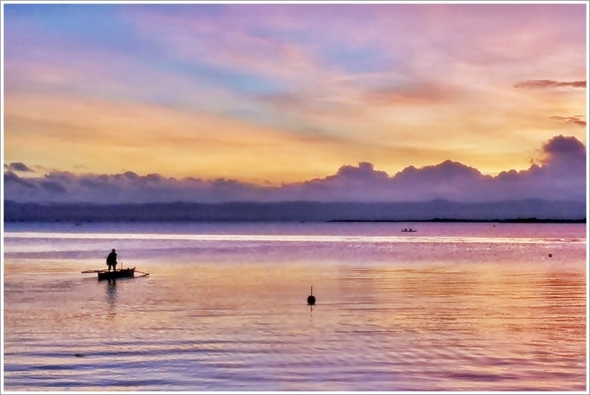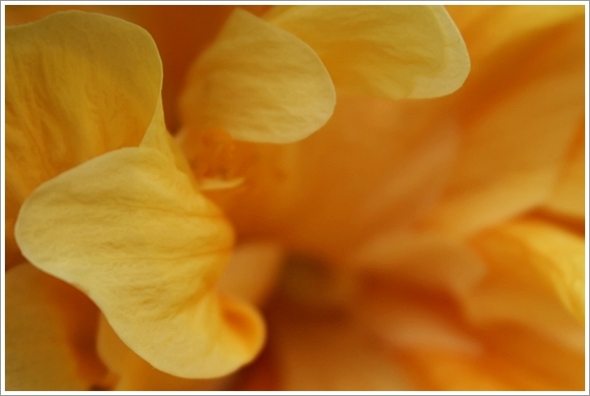A nation grieves
It was in the world news early this week. Last Tuesday at 8:10 in the morning, a 7.2 magnitude earthquake struck the tourist island province of Bohol situated in the central Philippines. The power of such temblor was equivalent to 32 atomic bombs, and it flattened houses, crumbled buildings, destroyed bridges, cracked roads and, as of last count, claimed the lives of over 170 people, mostly buried under piles of rubble. The death toll is expected to mount as more bodies are retrieved from under collapsed structures. I have featured Bohol (and the nearby province of Cebu which was also heavily affected) in many previous posts. Both provinces are popular tourist destinations. Bohol in particular is known for its Chocolate Hills , the rare Tarsier, the green Loboc River, pristine beaches and its centuries old churches. Aside from the lives that were lost, the nation grieves with the destruction of 10 heritage churches, all priceless national treasures, some dating back to the 1500s. I had the opportunity to photograph some of these beautiful churches during my early travels, and below I have paired my pictures of them with the pictures I saw in the news in the aftermath of the quake. For us photographers who enjoy capturing old, historic structures, these are heartbreaking sights:
 The Church of Our Lady of the Immaculate Conception in Baclayon town, Bohol. Built in 1717.
The Church of Our Lady of the Immaculate Conception in Baclayon town, Bohol. Built in 1717.
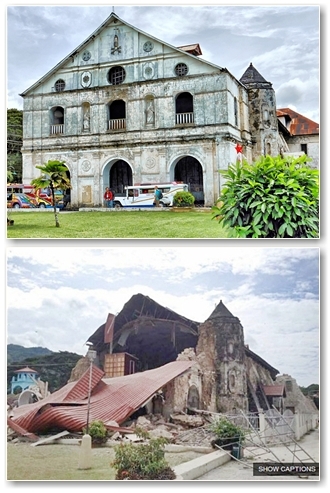 The Church of San Pedro in Loboc, Bohol, originally built in 1602.
The Church of San Pedro in Loboc, Bohol, originally built in 1602.
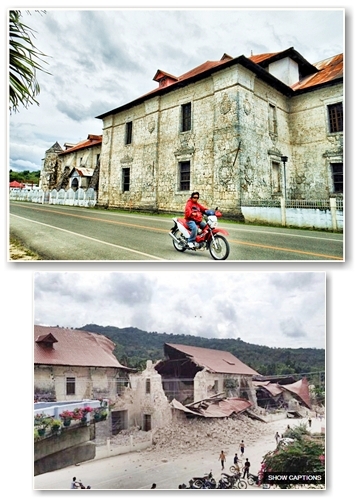
Another picture of the Loboc Church, from the side.
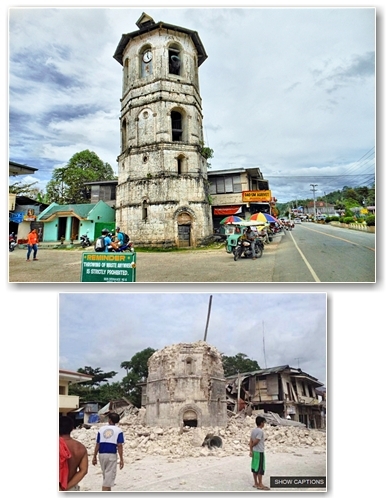 The original bell tower of Loboc Church stands some 100 meters away from the church structure. Now it’s just a stump on the ground.
The original bell tower of Loboc Church stands some 100 meters away from the church structure. Now it’s just a stump on the ground.
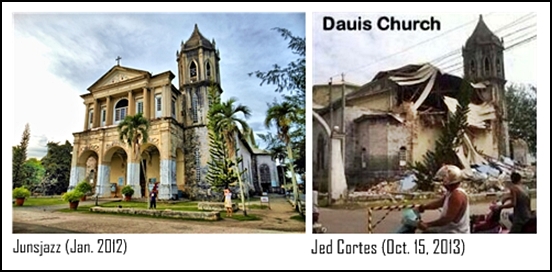 The Church of Our Lady of the Assumption in Dauis, Bohol built by Jesuits in mix style but influenced by Byzantine and Romanesque architecture.
The Church of Our Lady of the Assumption in Dauis, Bohol built by Jesuits in mix style but influenced by Byzantine and Romanesque architecture.
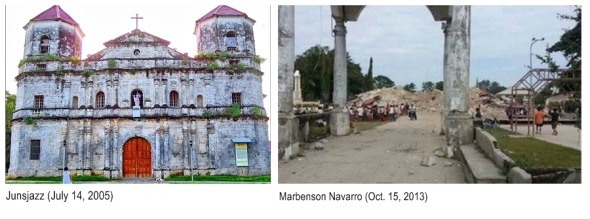 The Church of Our Lady of Light in Loon, Bohol was the biggest church in the province, built in 1753. The whole structure was pulverized to the ground.
The Church of Our Lady of Light in Loon, Bohol was the biggest church in the province, built in 1753. The whole structure was pulverized to the ground.
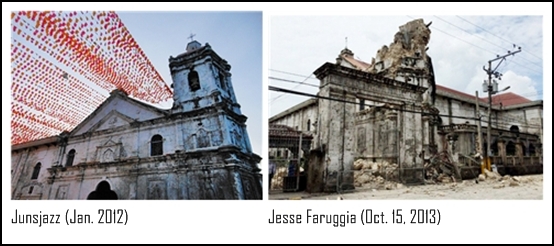 The Minor Basilica of the Holy Child in Cebu City, founded in 1565. It’s belfry fell off.
The Minor Basilica of the Holy Child in Cebu City, founded in 1565. It’s belfry fell off.
These old churches were built with materials during those times – coral stones, mud bricks, limestones – and are most fragile. Throughout their history, they have been subjected to fires, typhoons, previous earthquakes and even World War II. They were the first to come down during the powerful quake this week. Experts are assessing if some of them can be rebuilt, while others like the Loon Church which was flattened, may have a new church built on the site. I am quite fortunate to have captured the beauty and grandeur of these churches in their original condition before the disaster. Now I have them immortalized in images, and preserved in my memory as I saw them in their full glory.
Note: These churches are featured in Junsjazz Images & Inspiration Digital Magazine Issue #2.
Photos are “made”
Article Excerpt:
The best photo images are not taken anyway, they are “made,” and I have always thought that learning photo composition is not that much more different than learning anything else. Some people just catch on faster than others, but eventually with practice most people can do it. How long that will take mostly depends on how you go about it. The only real way to practice composing an image is by recording them on film, or digitally, so that you can see what you did right, and what you did wrong? It is actually all of your mistakes that teach you how to do it right the next time. However, just slapping a lens on your camera and shooting away is not the answer either. As the saying goes, “There has to be a method to the madness.”~by Paul W. Faust from his article The Art of Seeing: An Exercise in Photo Composition
Visual awareness
Article Excerpt:
Principles of Visual Dynamics
If you like rules, remember exceptions prove the rules. Being too insistent on the application of hard and fast rules can blind you to many exceptional opportunities. If you don’t like rules, remember that while there are no absolutes there are forces at work that have consistent tendencies. Denying or ignoring universal principles will lead to unpredictable unrepeatable results; you’ll achieve success far less frequently and be far less able to repeat your successes.
Forget rules. Forget absolutes. Forget musts. Instead develop an awareness of visual principles. Look for the unique power each element has to influence a composition. Develop a sensitivity to how elements and combination of elements make the forces at work in a composition stronger or weaker. Instead of composing formulaically, you’ll then be able to improvise. Understanding the principles of visual dynamics will help make your decision making process more informed, it will not make choices for you. Awareness is the key. Better awareness brings better choices bringing better results.
~John Paul Caponigro from his article Photographic Composition: Introduction
Shoot or swim?
When you’ve got islands, unless they are rock formations protruding out from the sea, then you’ve got beaches. What do you do? Plunge right into those inviting waters? Shoot First, Swim Later was the title of my post last October 30, 2012. I’m reposting it:
My country, the Philippines, has 7,100 islands. Put all those coastlines together and it will stretch for 23,000 kilometers, the third longest in the world. As a tropical country, it’s literally beach time all year round. Hence the beach, found everywhere, pristine in its natural beauty, is a mainstay subject of mine. Water, sand, sea, tides, shells, corals, sunny skies, palm trees, all these converge to create an inviting, colorful and exotic environ deserving of the pages of a travel magazine. In fact, we have some of the best beach and diving locations in the world. So how exactly do we photograph the beach, coast and shorelines? We know these images as seascapes. Darren Rowse, founder of the online Digital Photography School, jots down 10 Beach Photography Tips which include looking for focal points, watching the horizon, using flash and filters, utilizing black and white and many others. Unless you live there right by the sea, the chance to be at a scenic coastline or beach must not be passed up. You will be guided by your accumulated knowledge of what to shoot, when to shoot and things to look out for to get that postcard-perfect shot. (Photo location: Alubihod Beach, Guimaras Island)
Composition and individual expression
Article Excerpt:
The decisions that the photographer must make are decisions that are made on the basis of feelings and emotions. Decisions that are aimed at expressing our emotional response to a scene, our perception of the subject we desire to photograph, and our personal artistic approach. All of these represent individual choices, choices that we are usually unaware of until we find ourselves in the act of capturing a specific subject with a lens and a camera. As such, this process prevents camera designers and software engineers to program either the hardware or the software to automatically express our response to the subject. They cannot program it any more than we can program it because both of us ignore what this response will be.
So what am I getting at in this explanation? I am getting at the fact that no matter how advanced and automaticized the equipment and the software we use becomes, there cannot be a substitute for individual input and expression.
What I am also getting at is the fact that the field of endeavor where this individual input is best expressed is the field of composition. Why? First, because composition is about personal choices: very few, if any, aspects of composition can be automaticized. Second, because composition is a field of endeavor composed of multiple facets and not just a set of rules. If it was just a set of rules it would be possible, theoretically, to think that these rules may be embedded in camera or computer software and that such software may have the ability to “compose” photographs on the basis of these rules, or the ability to give us directions aimed at helping us compose images in a specific way.
Just plain luck
I can say that I’ve just been plain lucky to chance upon gorgeous sunset scenes. You can’t gamble with the weather and atmospheric conditions, they are as fickle as they can be. One minute it’s sunny, another minute it’s cloudy. I’m the fatalistic type, if serendipity is on your side you’ll be presented with a heavenly, once-in-a-lifetime scene. If not, better luck next time. It just so happen that with my outdoor sojourns I am sometimes greeted with spectacular sunset sceneries and, for a photographer, these are manna – blessings from heaven – scenes that I may not see again. And rightly they are rare, unique occurrences. There is never the same sunset everyday. Each is a special daily spectacle. You may have the chance or luck to be there, at that moment, or you may not. When given the chance, you just have to be ready to capture nature’s stunning, colorful display. A quote comes to mind – chance favors those who are prepared, something like that. I am always alert and mindful of photographic opportunities, knowing that I may not see the same scene again. It helps to have foresight and quick, deliberate decisions as you never know what unforgettable views you may encounter.
Colorful canvas
A sunset can be your point of interest. But then that’s just that – sun, sky, clouds, colors. Those elements may be more than enough to carry an image. Yet there are times a sunset can be an interesting backdrop, an exciting candy-colored canvas playing an important supporting role to a main subject. Why this approach? Since sunsets are often paired with sweeping horizons, putting a focal point in your foreground or middle ground indicates scale and vastness. You present an earthly dimension of size, the broadness of nature. Another thing is you ramp up your composition, arranging elements with the the use of perspectives (foreground against a background), placing main subjects in relation to minor ones (framing or rule of thirds), and presenting a general point of view (vantage points or elevated shots). You work out your shots with sunsets. You are given precious few minutes from observation to execution when the sun mellows down and dips into the horizon. And you can take on either or all approaches in a way that is interesting and captivating. You can never go wrong capturing a sunset scene. But everything can go wrong if you don’t know how to.
Sunset Week
Another week and another picture series, this time on one of my all-time favorite subjects – sunsets.
I wrote this piece titled Do The Math on April 27, 2013 and I’m reposting it.
Those few minutes before the sun finally dips into the horizon will give you some deep contrast. It’s where the darkness of ensuing night conquers the last remaining light of day. And depending on the weather, cloud formation and where the rays fall, it can give you an exquisite canvas of colors, light, silhouettes and shadows.
I have said before that I’m not a morning guy, hence I have just a few sunrise shots. But I have a whole collection of sunset scenes – reminders of the cyclical nature of life, of the eternal passing of time divided into a 24-hour day. I remember this quote from American photographer Galen Rowell:
“There are only a fixed number of sunrises and sunsets to be enjoyed in a lifetime. The wise photographer will do the math and not waste any of them.”
I would like to think that the wise photographer is the thinking photographer that we should all strive to be. Whether we have reached that level or not yet, it would add to our experience, satisfaction and skill to capture one of the most spectacular displays of nature afforded us on a daily basis. When the opportunity to photograph a great sunset is there, yes, we should not pass it up. We should “do the math.”
Wishing you all a splendid week ahead!
Without color
Article Excerpt:
Without color the components of visual design become that much more important. Look at the lines in the image. Are they horizontal? Vertical? Diagonal? Do they form a pattern? Rhythm or repeating elements in a photo are interesting, with a break in the repetition being even more interesting. Also look at the texture, shapes, and forms in the image. Concentrating on these will take your mind off the color and enhance your ability to “see” and think in monochrome.
~Joel Wolfson from his article Digital Black and White Photography Tips and Techniques
Elements for B&W
Article Excerpt:
Here’s a run-down of the most common elements that you should look for when identifying a suitable subject for the black-and-white treatment. Remember that these elements can be used individually, or even combined to produce marvellous mono images with clout.
1. Contrast, shape & form
One of the fundamental aspects of black and white photography is that your whole composition relies on contrast (for on composing images, see our 10 rules of photo composition – and why they work). For this reason, look out for subjects that feature simple, strong lines and shapes. It’s often the shadows that define shape and form, so pay attention to areas of darkness, as well as light.
2. Tone
Black and white photos actually include a whole range of greys, which add subtlety to your images. Normally, you look for subjects that will translate into a range of tones from black to white, but you can also get great results where the subject is mostly light (high-key) or dark (low-key).
3. Texture and detail
Fine detail, or strong textures such as weather-beaten stone, foliage or clouds, can help to give your black-and-white shots depth and interest. Strong side lighting is perfect for bringing out the texture in any subject. You can use strong natural light, or get creative with flash to create sidelighting on the subject.
4. Graphic composition
Black-and-white images need strong compositions to really work. Keep an eye out for strong lines or features in your scene that can be used as leading lines, or positioned diagonally across the frame to create dynamic images.
~Black and White Photography: What Every Photographer Should Know
An eye for lines and shapes
Whether abstracts or straight ahead photography, or whatever genre for that matter, we are attracted to lines and shapes. These are powerful compositional elements which, combined with dramatic lighting and stimulating colors, provide interest in images. We don’t search for lines and shapes. For the keen photographer, it is almost second nature to spot such elements, along with textures, patterns, forms, shadows and highlights. The photographer’s “third eye” is always on the look out, it doesn’t turn on and off. It is ingrained in his system to notice and discern what is interesting and what will work out. He may see a subject in its grandiose totality and as a composite whole, but he will also eye the subject’s parts and areas that may carry distinct forms, details and character. Here are samples:
It has been one great week of photographic abstractions. I hope you enjoyed this week’s picture series. Thank you all for the visits, views, likes, comments and follows. Always, we must have fun in our photography and at the same time learn and develop it, maybe not to staggering, earth-shattering, legendary levels (anyway, most of us are not professionals) but simply to a point where we can be satisfied and proud of our work and make it worthy to be shown and shared to our online viewers. Keep on clicking my friends!
Try it with flowers
The one subject that will give you the best abstract images are flowers. Zoom in, macro or close up, and capture those delicate curves, arches, shapes and spirited colors, and bring them out in looming proportions and surreal dimensions. Crop out the edges, play with light, use selective focus or blur, present them in panoramic 16:9 aspect ratio or in tight 1:1 square format; you’ve got a lot of creative options in your toolbox. The approaches are yours to discover and experiment to come up with the best abstractions from nature’s little angels. Here are samples from my collection.
Abstract photography tips
Article Excerpt:
Quick Tips to Make Something Look More Abstract
1. An effective method is to crop out visual references that will immediately identify the subject.
2. Find something in your subject that shows clean shapes or lines.
3. Look for repeating patterns in your subject that you can focus on because they provide a sense of balance to the shot.
4. Light and shadows is a great tool in creating an abstract shot.
5. Use colors to give more impact.
~Allan Peterson from his article Abstraction in Photography
(Note: the above are short extracts; to read the full article please click on above link)
Enhance that abstraction
Article Excerpt:
The Power of the Selective Focus Technique
If you’re searching for an easy but effective abstract photography technique, selective focus is the technique for you. A narrow depth of field is achieved by the selection of a large aperture. The camera is then focused on the center of interest of the image. The rest of the objects in the image will fade into a soft blur.
There are two things which can be done to make your images even more notable when utilizing this technique. First, the color of the background should be different from the center of interest. The second point is that the center of interest can be made even stronger by using curves to point toward the center of interest.
The Use of Light and Shadows
Using the interplay of light and shadows can create drama in an image. Now, some photographers tend to think only in terms of light. This is a mistake — for light is nothing without shadows. Shadows are not just a lack of light. Instead, shadows function to make the light come to life. It is the shadows that shape the light, that draw attention to the light, and that integrate with the light to produce striking photographic opportunities. This is especially true with abstract images.
So, what is the shadows’ role in this technique? The primary role of the shadows is to help to define the forms. In other words, the shadows’ role is to help the forms to stand out. Consequently, it should come as no big surprise that the more interesting the objects in an abstract image, the more likely that the image will be successful. The shadows then function to make the more prominent.
~Ron Bigelow from his article Abstract Photography Tips and Techniques
Something undefined
We’ve learned that abstract images are beyond descriptions and definitions. Subjects may not be obvious and understandable at all. I have read many articles on abstract photography and have experimented on a lot of shots and they all point to these – the use of imagination and seeing beyond the literal. I never intended some of my shots to be abstracts. Who would have thought the above picture of the center of a basketball court would look nice when zoomed in and cropped, or the photo below showing the subtle flow of water in a shallow stream. Many think that abstract images, bereft of messages to convey, are simply easy snaps. For me, they are the hardest of photographic genres simply because you have to be more perceptive of the things around you, and sharply receptive of any stimuli in the environment – a color that stands out, a pattern that is formed, an object in contrast, textures that produce interesting details, a crease here, a crumple there, a crack in the walls, ripples in water, shapes in the foliage – oh the subjects and ideas are endless. But often they are unnoticed, and not any crease, crumple, crack or ripple will do. You still have to compose and frame, all of which must be compelling. It takes an observant eye to find something out of relative nothingness. And the trained photographer can capture something undefined. That is the spark of abstract photography.
Abstract Week
Thank you all for the follows, likes and visits last week during our picture series on “Shapes.” Another week and we begin another series. We go “Abstract” photography all week long. I’m reposting an article I did last January 3, 2013 titled Going Abstract: The Rules.
Aw heck, what a title! There are no rules. There are no descriptions. Abstract photography, like its cousin abstract art, defies definition. The content is not even important. You may not even make out what the subject is. And viewers may have that quizzical frown on their faces when looking at abstract work. They may not understand what the picture is all about, but what they can understand and connect with are these: the color, the shape, the form, the lines, the patterns and textures – essentially, these are elements of composition which we have tackled numerous times in previous posts. In abstract photography, forget what you are trying to convey and discard the message. Just make sure the image is visually engaging. Easy does it! Yet, how do we go about in pursuit of abstract photography? Time again to stack up on our learning. Freelance photographer Simon Bray shares some insights in his piece Creatively Approaching Abstract Photography. In his opening paragraph he mentions: “you don’t need any sort of special equipment, just a camera, any camera you like, and your imagination.” The article is divided into the following, with accompanying concise explanations: 1) What is abstract photography? 2) It’s all in the approach 3) Break the rules (again?, emphasis mine) 4) Pattern and Line 5) Form 6) Color 7) Working with architecture 8) Abstract and Macro 9) You’re an artist, and 10) Get out and give it a go! In almost all photography articles I have shared in this blog, the last tip is usually the same but only differs in wording. Ultimately it’s go right in and try it out for yourself. Versatile photographers can shoot any subject, but the great ones made their mark excelling in a particular genre. You may be gifted, but you’ll never know at what you are a genius of – macro, abstract, nature, portrait, street, wildlife, events – if you don’t go and dive right in.
Wishing everyone a wonderful week ahead!
Cuts through the clutter
These photos were taken earlier in the week during a local festival. People were in colorful, native attire. But that’s just it, I get color fatigue after featuring full vibrant pictures the whole week. If you’re new to this blog, I reserve weekends for monochrome, a respite from the magnificence of color and a return to the striking simplicity of black and white. Since these are festival images, expectedly they are filled with people and details rendering them almost a dissonance of forms, a disarray of shapes. Yet in black and white, one still finds order – a harmony of mood, expressions, movement and drama. No wonder black and white is the preferred medium for portraits, photojournalism, street and people photography. It cuts through the clutter and presents purity even with subjects in seeming disorder. It was father of Canadian photojournalism Ted Grant who said:
When you photograph people in color, you photograph their clothes. But when you photograph people in black and white, you photograph their souls!
All the best to everyone! Keep on clicking!
Remove color
Article Excerpt
Have you ever been out and about wandering through villages or fields, cities or towns and you can’t seem to find anything worth photographing … just “One of those days”! You will get them and it can be quite frustrating. You have made the effort to get your gear together, drive to a favourite spot but just can’t get the creative juices flowing!
As an experiment, the next time you are out on a mission, try to see things as they would appear in a black and white photograph. Black and white photography tends to add mood to a photo and by removing all traces of color, the onlooker’s eye is more attracted to your subject.
~See in Black and White Photography from All Things Photography
The most active of shapes
Magazine Excerpt:
Shapes
The most active of shapes use diagonal lines – the triangle is an eye-catching building block for your picture. Its three sides also introduce odd numbers into the photographic vocabulary. As well as triangular-shaped subjects, think about the structure of your photograph – are there three elements you could join together with imaginary lines to form a triangle?
Four sided shapes such as squares and rectangles mirror the four sides of the picture frame – there’s no conflict there, so the viewing experience isn’t as absorbing. However, they can be used alongside diagonals and triangles to produce a more exciting image.
~Digital Camera Magazine: Master Composition
Organic vs. geometric shapes
I wrote and posted this on March 4, 2013. I’m reposting it to further enhance our knowledge on “Shapes” (our picture series this week) and how it impacts on our photography.
Organic shapes are also called curvilinear that are made up of curves, angles or both. Their main characteristics are curving appearance and smooth flowing outline. They look natural and are mostly found in leaves, flowers, plants and animals. Organic shapes are out there in the natural world, created by the environment. Being free form, they don’t have uniformity and perfect measurements. Which is the exact opposite of geometric shapes. Although they may also appear in nature, geometric shapes are products of man – rectangles, squares, triangles – which are building blocks of design and construction. With the technological revolution, man can now create structures and buildings mimicking organic shapes. What’s in it for our photography?
Shapes are compositional and design elements that are visually appealing. Going for the soft curves of organic shapes or the hard corners of geometric shapes, and partnering them with the right colors, lines, patterns and light will create captivating images. A photographer once said that the eye traffics in feelings, not in thoughts. Feelings are triggered by what we see and sense. A visual stimulus of delightful shapes properly composed will evoke an equal emotional response of joy, gladness and a sense of well-being.
Shape vs. form
This article of mine was posted January 28, 2013 and I’d like to repost it in keeping with our understanding and presentation of “Shapes” which is our picture series for this week.
We use the words “form” and “shape” interchangeably. There is however a distinction. This article What Is the Difference Between Shape and Form In Photography provides a basic explanation that distinguishes between the two, and how they correlate to the concept of “space” and how, when combined, creates the element of photographic composition. We’ve been exposed to shapes early on – triangles, rectangles, squares and those with many sides (hexagon, pentagon, etc.). In a photograph, an object comes across as two-dimensional. In the accompanying photo, we know the shape of the ball, in the same manner that we know the shape of a wheel, a plate, saucer, a complete pizza, a coin as examples. When viewed flat, they are all round or circular in shape. When light falls on the subject, like the ball in the picture, it produces dark areas and shadows, highlighting its length, width and depth, and producing a three-dimensional form with the negative space around it. Learning to use this concept of space in combination with the shape and form of central subjects will help in determining the viability and effectiveness of our composition. We know the shape of a tree. When we photograph that tree with the light of a sunset in the horizon, it will cast long shadows and create a dramatic form. Composition comes to fore when we combine our focal point (the tree, already in its interesting form) with other elements in the space around it, say distant mountains in the background or a verdant field surrounding it. The thinking photographer already envisioned the scene, and it is a matter of arranging these elements in the frame to come up with a compositionally pleasing shot.
The mark of its maker
Outlines, forms, shadows, shapes, lines, light, tones, textures – these are the ingredients of black and white photography. Have fun with your imagery. Play with the elements and composition. Love the light. Bask in contrast. Experiment. Crop to exclude and emphasize. Discover. Assess with your eye. Process with your brain. Capture with your heart. With these, I can offer no other more meaningful tips when it comes to making monochrome images. With tools and knowledge, it all boils down to you – the creator and artist. After all, each picture is an individual mark of its maker.
To HDR or not
Capturing High Dynamic Range (HDR) photos and processing them is one of my photographic enjoyments. Shooting a scene in its normal exposure sometimes doesn’t cut it, especially if your light is on the side or back of your subject. In that case, your subject is dark and becomes just a silhouette. Using your camera’s bracketing feature (to take three different exposure shots) or shooting in RAW format allows you to create HDR images, and post processing them later. I usually go for the former or if ever I capture in RAW I convert the image first to jpeg or tiff (to minimize noise) then process. We will not do an HDR tutorial here, but I will share my viewpoint on why I do HDR on certain subjects and scenes. First let me point you to some great links:
What is HDR Photography? by Rhommel Bernardino from PictureCorrect
How to Create High Dynamic Range Photographs from wikiHow
Photo Gallery: How to Take HDR Pictures from National Geographic
HDR allows you to present an image with all the nuances of light and the subtleties of color.
Hence HDR images are quite colorful (though this isn’t always so) with deep contrasts. When done right, you can produce images that pop right out. I am fond of HDR but only on certain subjects such as landscapes and, you guessed it right, churches. The key phrase here is “when done right.” In HDR we have the tendency to amp it up to get that “ah” and “omph” and likening it to too much salt, it spoils the broth. The standard for HDR is realism. It must look natural, but enough to bring out the details. Note the cracks, exposed bricks and signs of age on the walls of the church pictured above, or the deep yet fading (or I should say peeling) colors of the church below. In a non-HDR image, you will just see a relatively smooth wall with a few jagged lines representing cracks. So much more are exposed – light, details and information using the HDR technique. Here is an excerpt from Rhommel Bernardino in his article What is HDR Photography? (it’s the first link above):
With HDR technology, photographers can compile different photographs taken at variable exposures. Not only that but also this technique allows photographers create images with an excellent light detail, which is not possible in single shot taken by ordinary cameras. By using HDR cameras, photographers can capture excellent still photographs, in overexposed as well as underexposed settings. Though photographers have the freedom of adding several effects to the photographs, it is always recommended to keep the image as realistic as possible.

